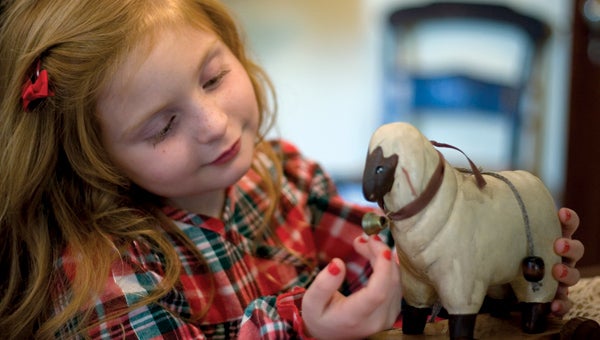Deck the halls at Riddick’s Folly
Published 11:15 pm Wednesday, November 16, 2011
Among the other excitements of the season, Christmas during the mid-19th century would have given folks a good excuse to decorate their homes in the latest fashions.
Nowhere in Suffolk would that fashion have been more on display than in the home of Missouri Riddick and her husband Nathaniel, the place the city knew even then as Riddick’s Folly.
“They were one of the most prominent families in Suffolk, so if something was fashionable at the time, they were doing it,” said Lee King, curator of the museum that was once home to several generations of Riddicks.
Much of what we have come to consider Christmas tradition in America was just beginning to be seen during the time the Riddicks lived in their grand home at the corner of Front Street and First Cross Street.
During the 1840s, Missouri Riddick and her daughters, Anna Mary and Missouri Taylor, would have spent part of the holiday season carefully trimming their Christmas tree in the back parlor, while Nathaniel worked late at his law practice next door.
Christmas trees were the latest fad at the time, brought to Virginia by immigrants from Germany, and the ladies used small toys, strung cranberries, dehydrated orange slices, paper ornaments, pinecones and other embellishments to decorate their trees, King said.
They decorated the home’s mantel and fireplace with all manner of natural greenery from their own garden — cypress, magnolia, English ivy and, for a splash of color, winterberry.
A wreath of greenery went on the door, because it was fashionable, but no other outside decorating would have occurred.
On Christmas morning, the girls would have awakened to find their gifts on the tree, rather than under it — paper cones full of nuts and sweets, tiny rocking horses, origami figures and other decorative presents.
But Christmas Day was only the beginning of the season. Holiday merriment would have continued through Jan. 6, the Day of Epiphany.
King’s descriptions of the Riddicks’ holiday décor are largely assumptions, but they are based on the customs that were typical of the region, time period and social class to which the Riddicks belonged, he said.
Plantation owner Mills Riddick built his home near the road to Norfolk in 1837 with the funds from an insurance payoff from a fire that had swept through town and destroyed several of his buildings. Locals dubbed it “Riddick’s Folly” because of its size.
When he died in 1844, Mills’ widow, Mary Taylor Riddick, chose not to live in the large home by herself. She moved into a small house a few blocks away and left the grand structure to her 10 children in equal shares.
Son Nathaniel Riddick purchased his siblings’ shares at the age of 25. He and Missouri moved in with their two daughters, and he built a law practice next door. It was this young family that decorated the home in the 1840s, when Christmas trees first came into fashion.
No records exist of what exactly the Riddicks did to celebrate the holiday, King said. However, assumptions can easily be made based on what contemporary families did.
Today’s Riddick’s Folly models its decorations and celebrations after the mid-1840s style that Nathaniel and Missouri Riddick would have used, which featured natural greenery, modest ornaments on the tree and gifts on the tree rather than below it.
“They didn’t do any decorating outside, except for maybe a wreath on the door,” King said. “That’s why we don’t allow it here.”
King and his staff usually do the Christmas decorations in about a day, using much the same materials as the Riddicks would have used.
“Of course, we have wood cranberries that don’t have to be strung,” he said.
The Riddicks may have had more decorations than what is done now, King said.
“We don’t decorate quite as much as we have in the past,” he said. “We will carry a little bit upstairs.”
Just as the Riddicks likely grew plants they could use to decorate, King uses plants from his own yard to decorate the historic house.
“I think they tried to grow things they knew they could use,” he said.
Modern-day celebrations at Riddick’s Folly attempt to recreate the Riddicks’ holidays with a green-robed St. Nicholas, rather than Santa Claus, representing the spirit of the season, as well as costumed re-enactors depicting the various members of the Riddick family.
It’s all about style to honor one of the most stylish historical families in Suffolk, King said.
“I think the Riddicks would have been decorating pretty lavishly,” he said.






